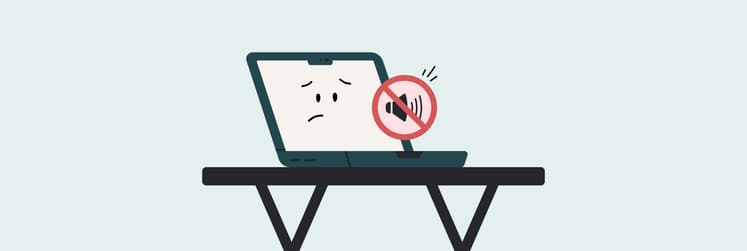How to fix MacBook Pro audio crackling: Solutions for various issues
I've heard that stuttering audio was a common issue with OS X 10.9 Mavericks in late 2013, but I didn’t expect it on my MacBook Pro. I was even more surprised to find Apple Community forums full of questions like, "Why are my speakers crackling?"
It took me a while to dig through the settings and apps, but I found a few ways to fix the issue. Now, let me share what I’ve learned about what causes MacBook Pro speakers to crackle and how to restore great sound on your Mac.
If you're tech-savvy, here's a quick list of solutions. For detailed instructions, scroll down:
| What might be wrong | How to fix it |
|---|---|
| Hardware issues | Run Apple Diagnostics. Replace the speaker if needed. |
| Basic software issues | Restart Mac, update macOS, or reset audio settings. |
| Deeper software issues | Reset NVRAM; restart Core Audio via Terminal. |
| System overload | Use Activity Monitor to manage CPU load. |
| Incorrect audio settings | Check the sound settings and change the sample rate in the Audio MIDI Setup. |
| Crackling during video playback | Use Elmedia Player or convert media with Permute. |
| Crackling during video calls | Use In Your Face as an alternative app to join a video call. |
| Poor audio quality | Use Boom 3D for sound boosting. |
Fix MacBook Pro speakers crackling and buzzing
Maybe the latest macOS update broke the audio service. Perhaps the wrong audio settings are to blame. Or what if the app you’re using is just not compatible with your Mac’s software?
There are a few tried and tested actions you can take immediately that will quickly solve the crackling issue with MacBook Pro speakers.
Restart your Mac
It’s a simple method that solves many problems better than magic. Choose Restart from the Apple Menu, wait for your Mac to boot up again, and check if the audio issues have been resolved.
Unplug external devices
Sometimes, external devices connected to your Mac can interfere with its audio playback. See if unplugging all connected external devices, especially audio equipment like an external microphone or external speakers, resolves the issue.
Clean the speaker grill
Dust buildup on the speaker grills distorts the sound. Use a soft brush or keyboard vacuum cleaner to clean the speaker grills gently.
Update macOS to the latest version
Are you using an older macOS version? If yes, this could be the reason behind the crackling or buzzing audio. Apple is quick to fix the majority of software-related issues, and chances are, the new macOS version is free of the bugs you’re experiencing. So, update your macOS to the latest version asap. Go to System Settings > General > Software Update. Check for any available updates for your Mac.
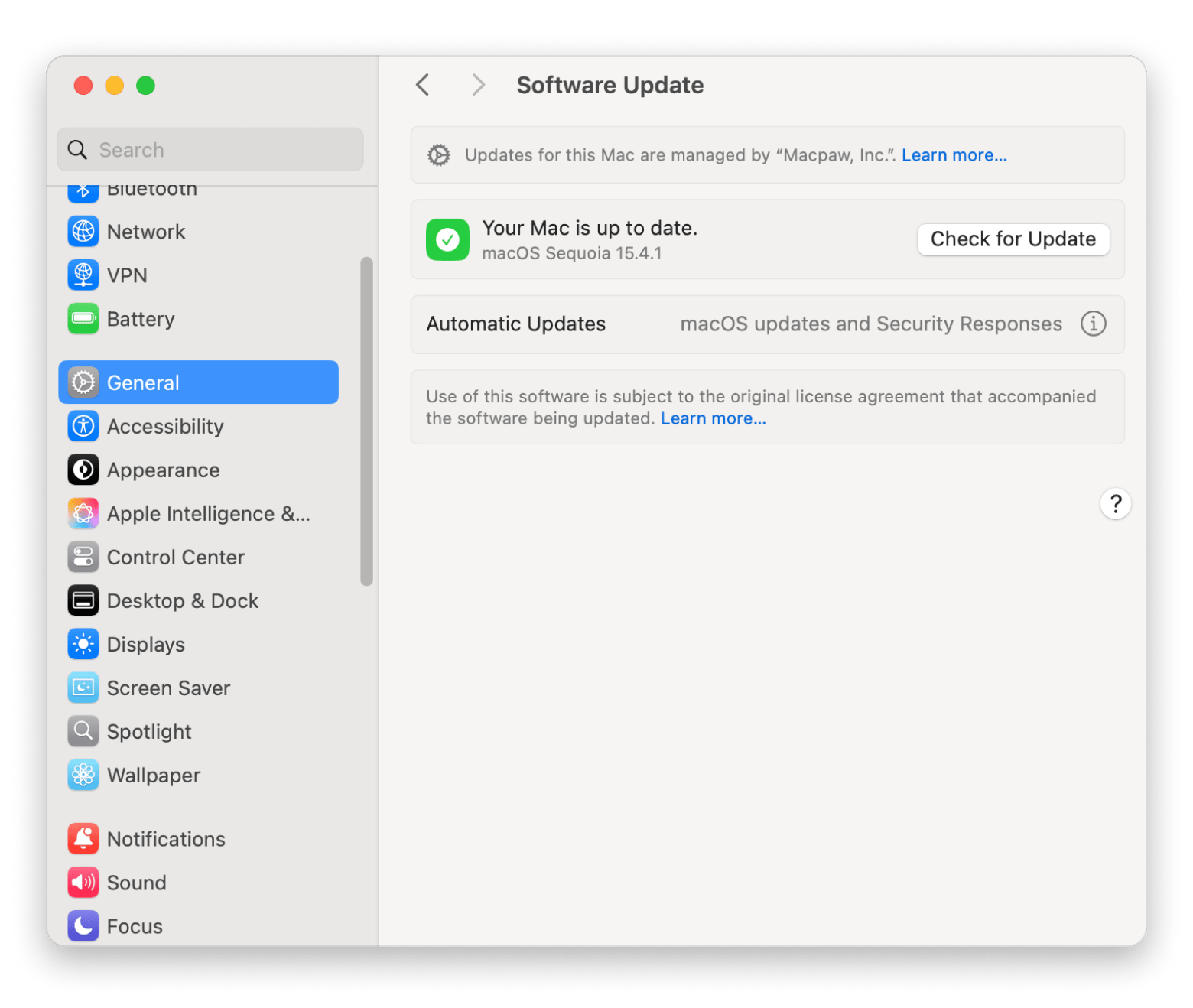
Prevent system overload
It’s not uncommon to hear a MacBook making a crackling noise when it’s performing multiple processor-intensive tasks and playing audio simultaneously. Open Activity Monitor, click the CPU tab, and perform the task that causes the MacBook speaker to crackle with the CPU widget open.
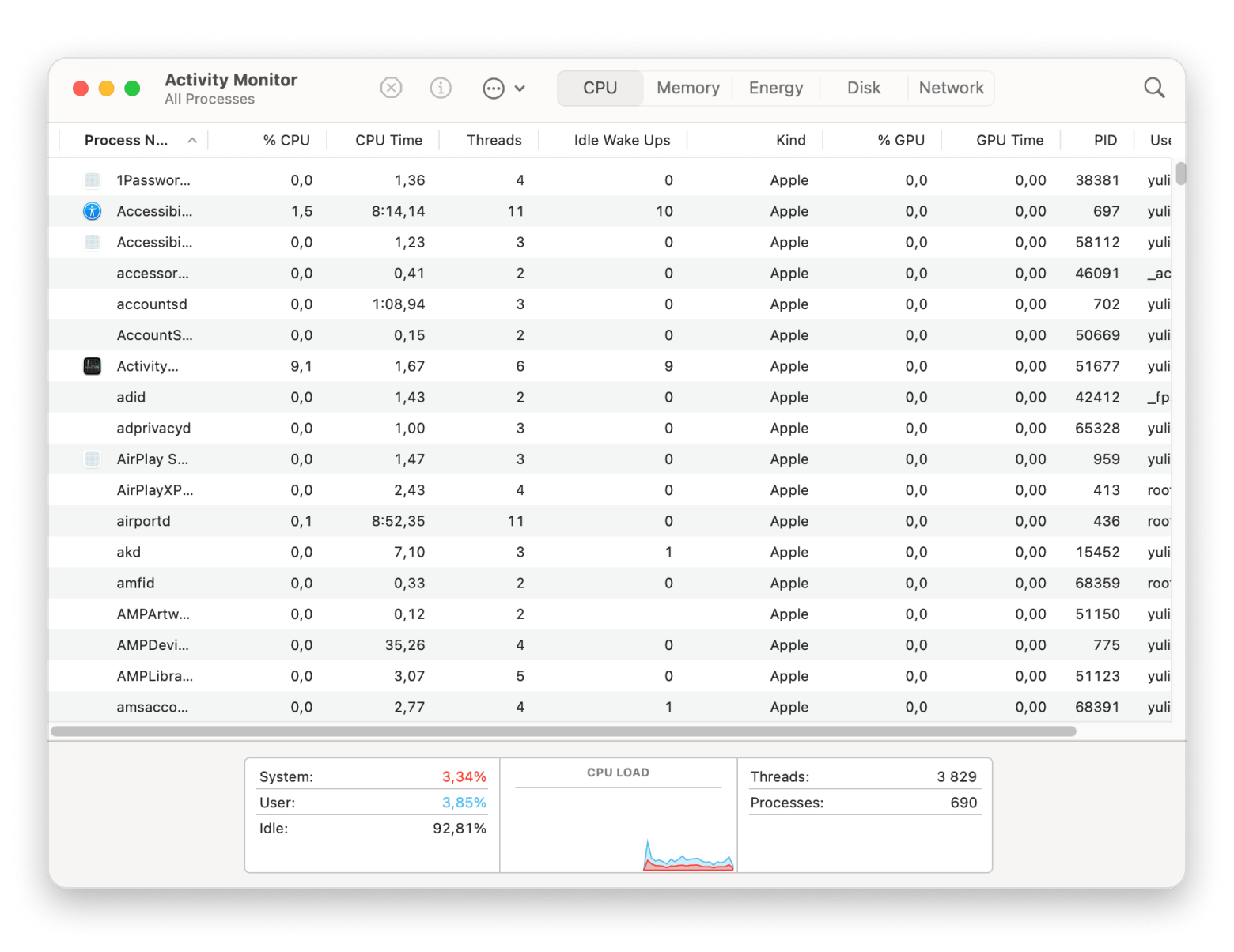
Reset your Mac's audio settings
- Open Finder.
- Click Go in the menu bar > Computer.
- Click Macintosh HD > Library > Preferences > Audio.
- Delete the following two files:
- com.apple.audio.DeviceSettings.plist
- com.apple.audio.SystemSettings.plist
5. Empty the Trash.
6. Restart your Mac.
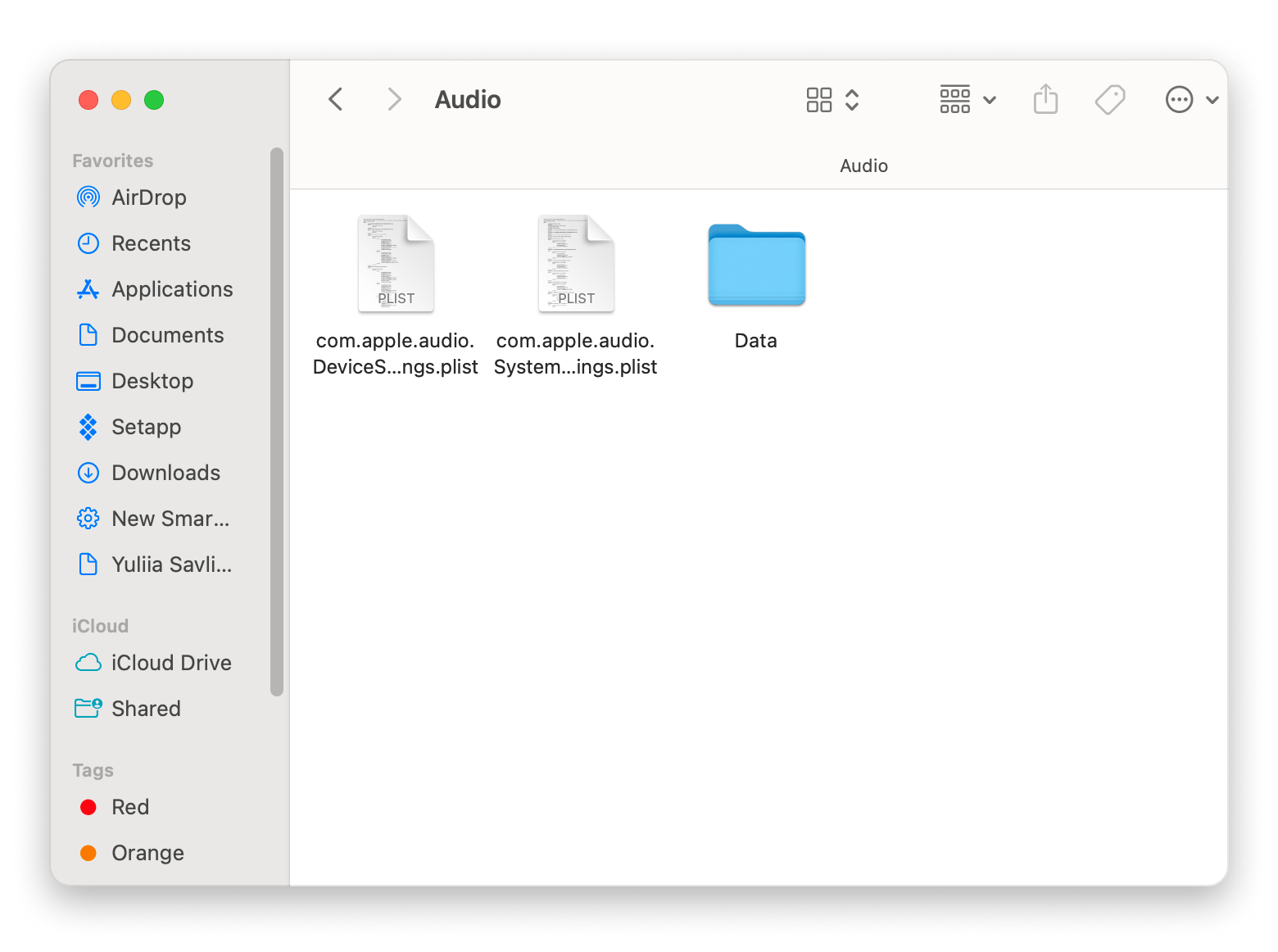
Follow these steps to reset your Mac's audio settings and potentially fix any crackling or distorted sound issues.
Turn off user interface sound effects
Maybe all you need is a simple fix like this one. Open System Settings and click Sound. There, you can turn off Play user interface sound effects.
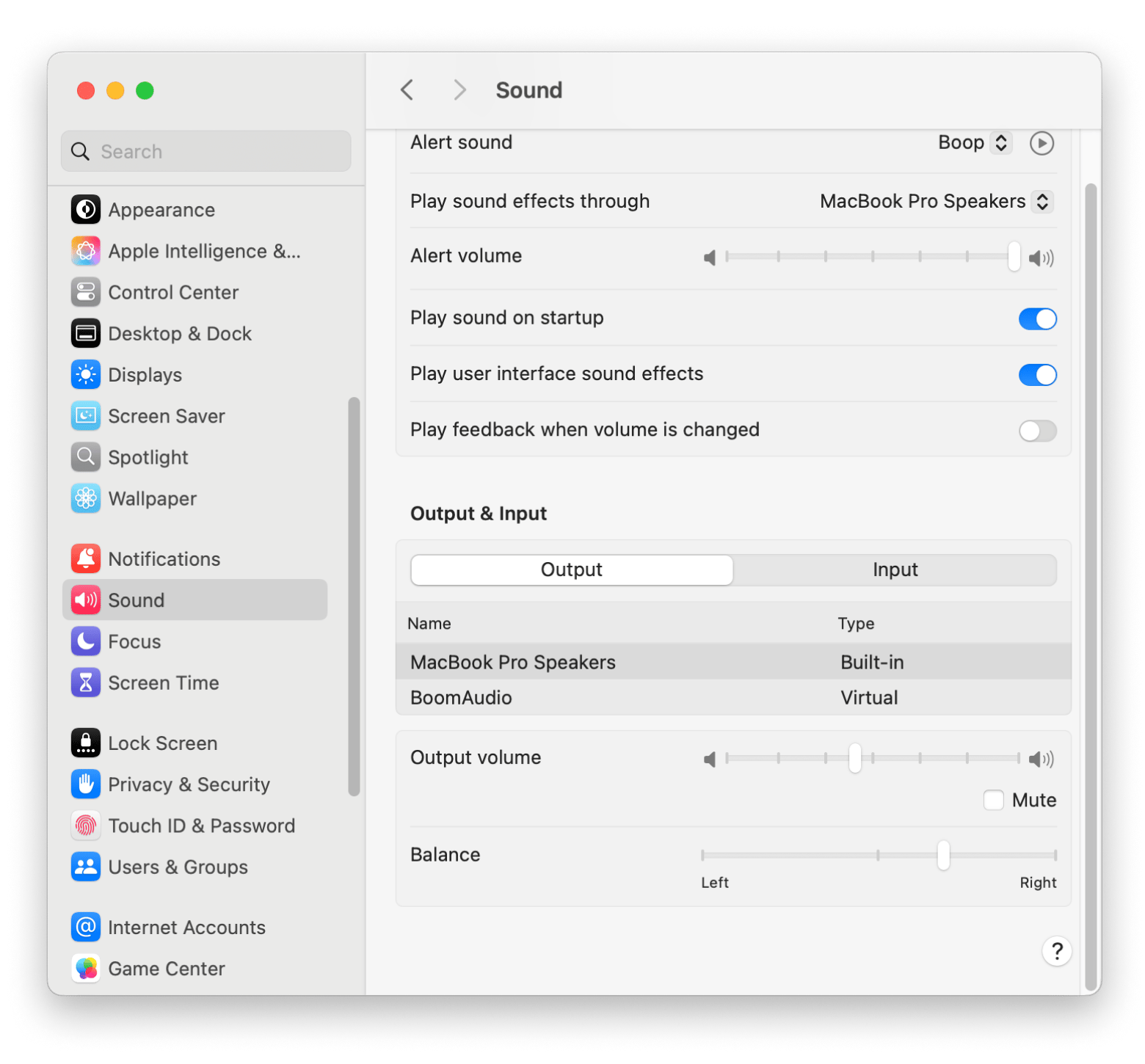
Change the sample rate of your audio device
I didn’t realize how much the sample rate could mess with your Mac’s sound until I started hearing weird crackling from my speakers. Turns out, when the sample rate doesn’t match what your Mac or speakers expect, it can cause all kinds of annoying glitches.
Here’s what worked:
- Open Finder.
- Go to Applications, then Utilities, and launch Audio MIDI Setup.
- Click on MacBook Pro Speakers in the sidebar.
- Look for the Format option and select 44.1 kHz or 48 kHz from the drop-down.
- Play some music or a video to test if the issue is gone.
If you’re still having issues and your Mac can handle higher settings, try bumping it up to 96 kHz. That fixed it for me when the other options didn’t cut it.
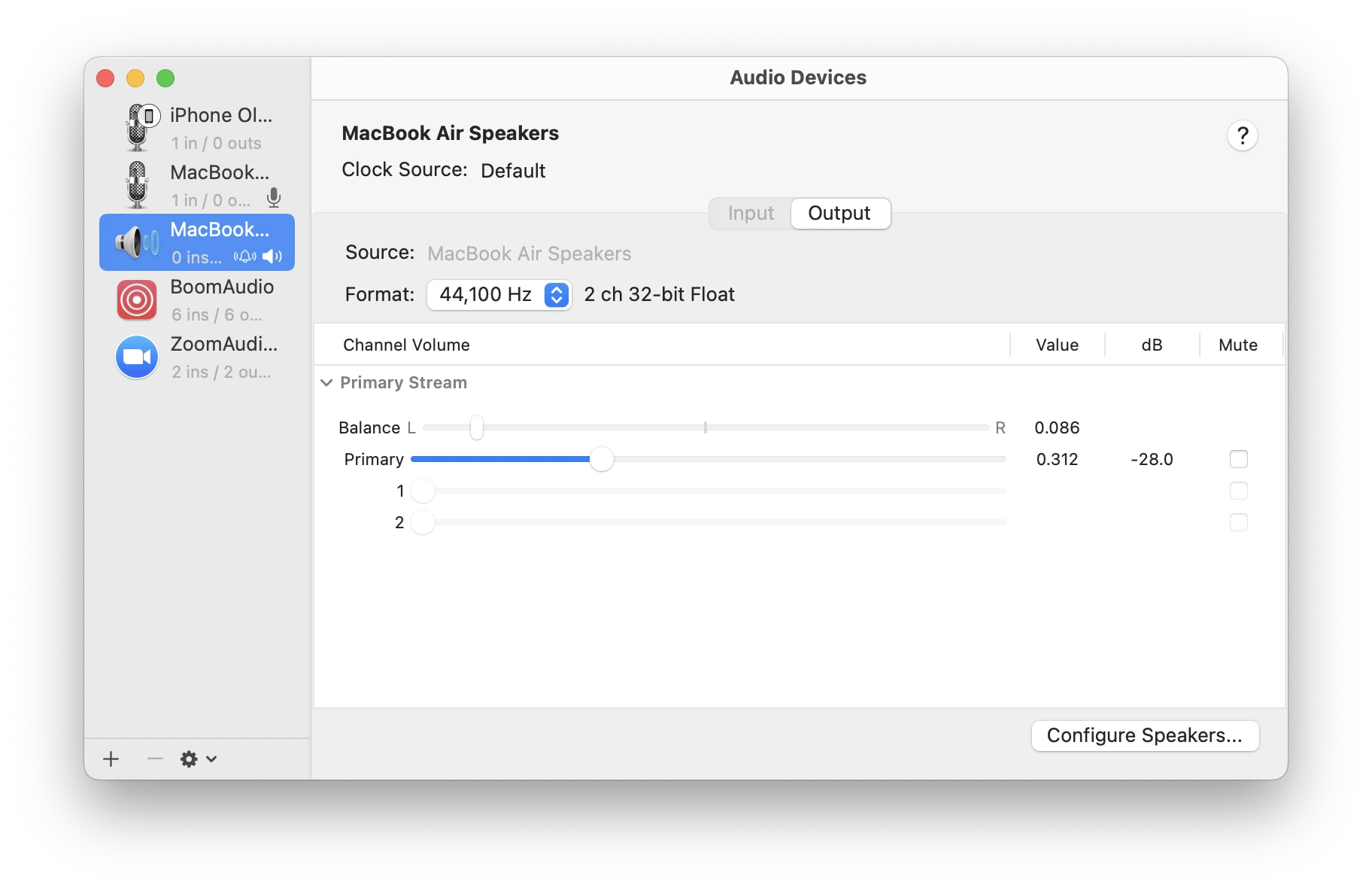
These are the basic solutions. If none of these tips worked, it’s best to take your MacBook Pro to an authorized service center. Before that, you might like to try the advanced recommendations below, which include in-app fixes and deeper system adjustments.
How to fix MacBook speaker crackling in a specific app
Not all sound problems are related to macOS. Some issues are app-specific.
If you've noticed the crackling issue with your laptop speakers is isolated to one app or process, it may mean that particular software isn’t compatible with your current macOS version.
In this case, I would recommend trying a different app. Some will even boost sound quality on your Mac in addition to solving audio problems.
Improve your Mac's overall audio
I'd start with Boom 3D and its Audio Boost feature that amplifies sound without compromising quality and adding distortions. Boom 3D gives you precise control over your listening experience with optional remote management and an extensive palette of audio presets. I'm sure this app is a sound booster any Mac would be lucky to have.
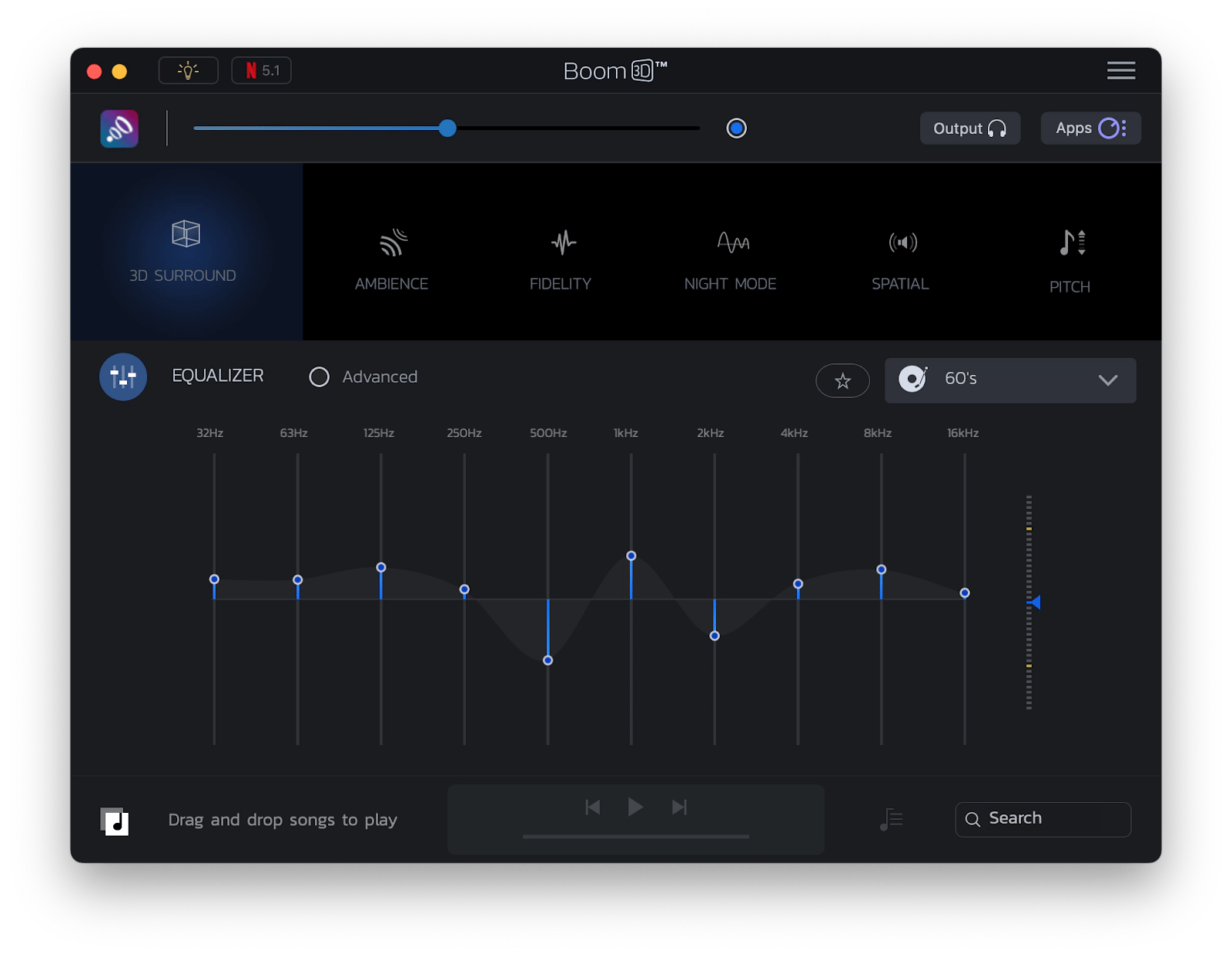
Fix video playback
If your MacBook makes crackling noises when playing videos, try Elmedia Player. It’s a video genie that will help adjust any video to your liking while allowing you to multitask with its picture-in-picture mode.

Convert media to a different format
Converting music or video to a different format can also improve sound on your Mac. Permute is a quick audio, image, and video converter that handles all file formats and can turn one into another in a matter of a few clicks.
Try alternative video calls
For audio problems that may arise during a video call, try In Your Face as an alternative way to connect to Zoom, Hangouts, or FaceTime. This app functions a bit like your personal assistant, pulling all links and meeting information into one handy schedule.

Advanced ways to repair a MacBook making a crackling noise
If none of the previous suggestions were successful in fixing your MacBook Pro's sound crackling, you can go a bit deeper into your Mac’s system to try and solve the audio problem.
Check sound settings
No audio coming from your Mac? The first thing to do would be to check the sound settings on macOS.
If this turns out to be the problem, it takes just four easy steps to fix:
- Go to System Settings > Sound.
- Click the Output tab. Check where your audio is being routed.
- Check the volume slider at the bottom and deselect the Mute box if necessary.
- Choose MacBook Pro Speakers if another device is selected.

Don’t see any output devices? I’ve been there. The problem can be with macOS updates. Try resetting the NVRAM to solve this issue.
Reset NVRAM to fix laptop speakers crackling
NVRAM stands for Non-Volatile Random Access Memory, and it's what Macs use to keep track of certain settings like sound volume, screen resolution, which startup disk you want to use, your time zone, and more. If you're having sound problems, resetting the NVRAM might help fix things since it stores those sound settings.
For the most reliable method to reset the NVRAM on your Mac:
- Shut down your Mac.
- Press the Power button.
- Press and hold the Command + Option + P + R keys together for 20 seconds.
Your NVRAM should be reset. Now you might need to set the date, time, and a few other macOS settings.
Force close Core Audio to restore sound on your Mac
Core Audio service is here to process and handle all audio on your MacBook Pro, including recording, editing, playback, compression and decompression, signal processing, and audio systems. Force closing this service may help fix MacBook Pro audio crackling.
The best way to kill Core Audio is by running a Terminal command. Note that you will need admin privileges in order for these steps to work.
- Open Terminal (Application> Utilities).
- Type the following command: sudo killall coreaudiod > Press Return.
- Enter your user password to authorize the command.
When you quit the coreaudiod process, it should restart automatically, and the sound should start working again.
Restart Mac in safe mode
Different from the common and simple overall restart, safe mode allows your Mac to perform certain checks and prevents some non-essential software from automatically loading or opening.
To restart a Mac with Apple silicon in safe mode:
- Shut down your Mac.
- Press and hold the power button until you see startup options.
- Choose your startup disk.
- Press and hold the Shift key and click Continue in safe mode.
- Go to your Mac > Check if the speakers still make that crackling noise.
- Restart your Mac normally if the audio sounds fine in safe mode.
It should fix the issue.
Run Apple Diagnostics to check for hardware-related issues
If you've tried fixing software-related sound issues but the speakers popping persist, you may realize your MacBook speaker crackling problem is hardware-related.
Apple Diagnostics can help detect what hardware components are causing the problem, as well as identify system failures.
Prior to running the test, Apple recommends getting a copy of their support instructions in front of you, shutting down your Mac, and disconnecting all the peripherals. Now you and your Mac are ready to enter Diagnostics Mode.
How to run diagnostics on Apple silicon Macs:
- Shut down your Mac completely.
- Press and hold the power button until you see the startup options screen (with a gear icon labeled Options).
- Release the power button.
- Press Command + D on your keyboard.
- Wait for Apple Diagnostics to run. When it finishes, you’ll see a list of any issues along with reference codes.
How to enter Diagnostics Mode on Intel-based Macs:
- Start up your Mac.
- Press and hold the D key while it turns on.
- Release the key when the progress bar appears. Alternatively, you’ll be asked to select a language.
- Wait for the Diagnostics process to complete and present you with a list of problems, if encountered.
From here, follow the on-screen instructions or contact Apple Support and arrange a Genius Bar appointment to fix the problems. Try to note any reference codes. If you see the ADP000 code, congratulations, no issues have been found on your Mac!
Why are my MacBook speakers crackling?
Analyzing the audio problems on your Mac and determining their root cause might be the most laborious part of the whole process. Once you know the cause, it becomes clear how to fix speakers popping, buzzing, and crackling.
All speaker-related issues can be classified as originating in your Mac's hardware or software.
- Hardware-related issues usually occur because of a partial tear in the speaker’s diaphragm, or what we call a “blown speaker.” There are ways to fix this problem temporarily, but the only long-term solution would be replacing the faulty speaker altogether, which can cost around $300-$600.
- Software-related issues are often caused by either firmware, macOS, or other app-specific bugs. The good news is that you should be able to fix these problems yourself. However, unlike hardware issues that often revolve around a single problem, the causes of a software-related issue can be more difficult to uncover.
A clear indicator of a software-related issue is if you hear the MacBook Pro's sound crackling randomly, or when you're using a specific app. If you’ve ever experienced that frustration, read on for a few effective methods of troubleshooting and fixing laptop speakers crackling.
macOS features that can improve sound quality
There are some native macOS features, settings, and third-party apps that can help improve your Mac’s sound quality. Let’s learn about them one by one!
Sound enhancements
macOS includes features like volume normalization and spatial audio for a smoother and more enjoyable listening experience. Volume normalization ensures a consistent sound level (not too high or not too low) across podcasts, videos, music, and other audio content. Likewise, the Spatial Audio technology brings a theater-like auditory experience to the movie or video you’re watching.
Audio MIDI Setup
Advanced users can fine-tune sample rates and balance default audio input/output settings on macOS. The Audio MIDI Setup is a native app for macOS, and using this setup, you can change sample rates (I’ve already explained above), set bit depth, and fine-tune input/output balance. This feature is highly useful for professionals like video editors and musicians who need precise control over audio quality.
Third-party sound boosting apps
Luckily, there are many third-party apps that let you boost your Mac’s sound without technical knowledge. They are super easy and simple to use. My personal favorite in this category is Boom 3D. I’ve been using this app for a long time to enhance the bass and audio quality of my MacBook. It’s an all-in-one sound enhancer that gives full control over the sound experience. With this app, you can manage your Mac’s audio with a convenient remote control. You also get advanced equalizer presets, a volume booster that pushes the volume higher than the default, and many more.
Preventing future speaker crackling issues
With my four tried-and-tested tips below, I bet you can prevent 95% of future speaker crackling issues with your MacBook Pro (or any other Mac model):
- Keep your macOS updated: Apple regularly releases updates to fix bugs and improve audio drivers. Keeping your macOS updated can help avoid audio issues like crackling.
- Monitor CPU usage with Activity Monitor: Abnormally high CPU usage can cause audio stutter and delay. Go to Applications > Utilities > Activity Monitor to identify and quit CPU-hogging apps.
- Use high-quality audio files: AAC, FLAC, or WAV for a smoother and flawless audio experience.
- Regularly check sound settings: Go to System Settings > Sound to ensure the right output device and balanced volume levels. Misconfigured settings result in poor audio quality, crackling, stuttering, and buzzing.
Keeping up with these habits will ensure a pleasant audio experience consistently.
Final thoughts on how to fix MacBook Pro audio crackling
Sound issues on a Mac can be incredibly frustrating, but the good news is that there are lots of ways to fix them. Whether it’s adjusting a setting, resetting your Mac’s audio system, or just switching to a better app, chances are one of these steps will help get things back to normal.
Personally, I’ve found that using the right apps makes a big difference. Boom 3D has been a lifesaver for boosting volume and clarity, Elmedia Player handles video playback like a dream, Permute is great for converting files, and In Your Face helps keep video calls smooth and stress-free.
If you want to try them all, there’s no need to buy each one separately. They’re part of Setapp, a single subscription that gives you access to over 250 curated Mac and iOS apps. There’s even a free 7-day trial, so you can explore everything and see what works best for you.
FAQ
How to change audio output settings?
To change audio output settings on your Mac:
- Go to System Settings > Sound > Output & Input.
- Select the device you want to use from the list of sound output devices.
- Drag the Output volume slider to adjust the volume, select the Mute tickbox to stop sound output, and/or drag the Balance slider to adjust the balance.
You can also use the Audio MIDI Setup to adjust other volume settings.
Does Apple have EQ settings?
Yes, Apple has EQ settings, but only within the Music app. To access EQ settings on a Mac via the Music app:
- Open the Music app.
- Click Window in the top menu bar, then select Equalizer from the drop-down.
- Select a preset or drag the frequency sliders to increase or decrease the frequency volume.
- Check On to activate the equalizer.
How do I fix the sound glitch on my Mac?
Try the following fixes to resolve sound glitches on your Mac:
- Restart your Mac
- Update macOS to the latest version
- Unplug external devices
- Clean the speaker grill for dust buildup
- Prevent CPU load
- Reset your Mac’s audio settings
- Change the sample rate of your audio device
- Disable user interface sound effects
If you’re tech-savvy, you can try advanced technical fixes like adjusting sound settings, resetting NVRAM to fix speaker crackling, force closing Core Audio to restore sound on your Mac, or restarting your device in Safe Mode. If none of these fixing tips work, it’s best to take your MacBook Pro to an authorized service center.
How to reset Core Audio on your MacBook?
Here’s how to reset Core Audio on your MacBook:
- Open Terminal.
- Type sudo killall coreaudiod and press Return.
- Enter your laptop’s password.
The Core Audio will restart and reset to its normal state.





